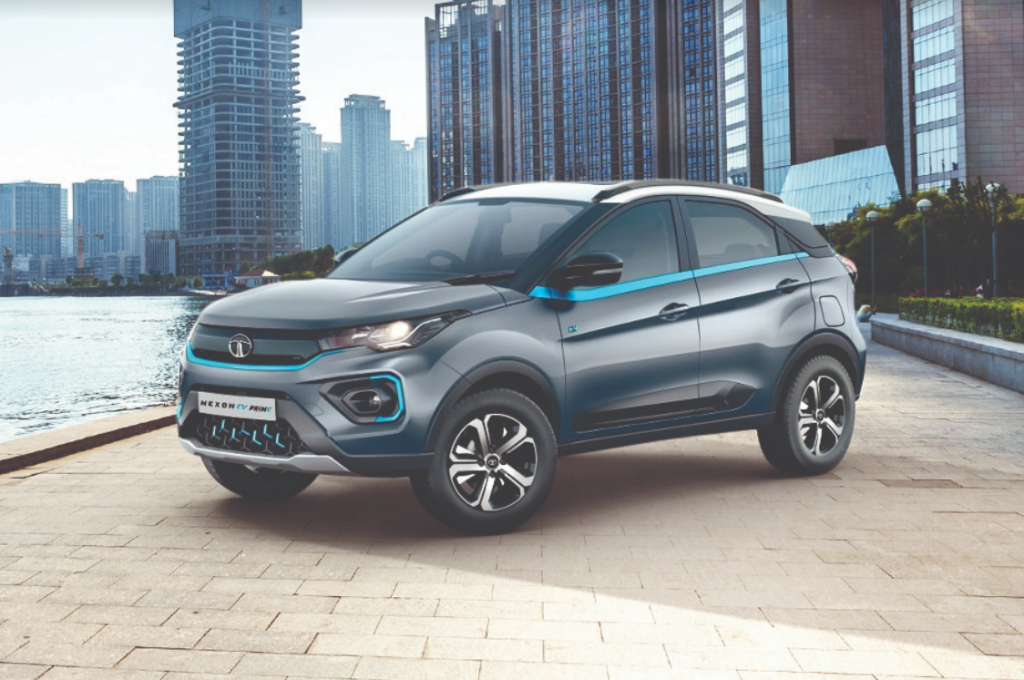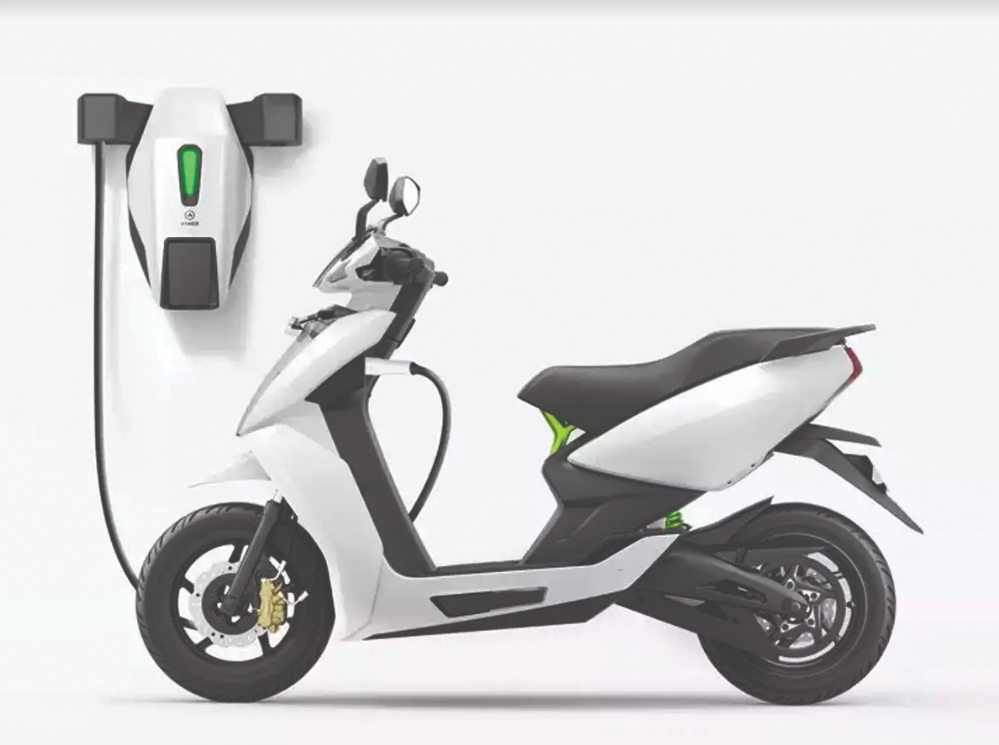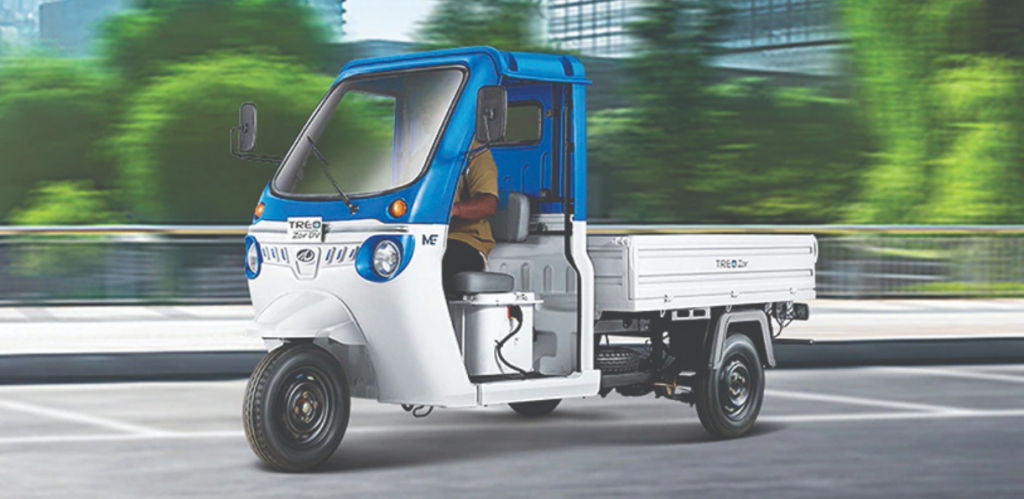It is predicted that India will have 2.2 million in 2023 EVs on the roads. As the years roll on, EV sales will grow by 68% CAGR through 2027. Several milestones are planned for 2023. So will the next year be the turning point that finally throws the electric vehicle market in India into high gear
By Abhijit Chanda
- India’s automobile industry, which includes electric and Internal Combustion Engine automobiles, is the fifth largest in the world
- The country’s EV market is anticipated to have a net worth of just $ 2 billion by 2023 and $ 7.09 billion by 2025
- The biggest advantage electric vehicles have over their ICE counterparts is that we can charge them at home
- Exponent Energy created a “Flexible Energy Stack”, which combines hardware and software to enable energy and data to flow easily
The future is electric, as far as electric vehicles in India are concerned. However, the infrastructure also needs to see massive upgrades to support them. The major hurdle in the buying decision is the charging network or lack thereof, and the time it takes to charge a vehicle. To go along with that, do we have enough emission-free power to fuel these vehicles? What about the servicing costs and ease? The government is taking measures to address many of these issues to improve the adoption of electric vehicles. Several milestones are planned for 2023. So will the next year be the turning point that finally throws the electric vehicle market in India into high gear? Let’s take a look under the hood.
BEGINNING POINT
India’s automobile industry, which includes electric and Internal Combustion Engine (ICE) automobiles, is the fifth largest in the world and is growing to become the third largest by 2030. There were a total of 13,92,265 electric vehicles in August 2022. The Ministry of Road Transport and Highways projects that figure to rise to 45 to 50 million by 2030. Of this rather large pie, the two-wheeler has one of the highest unrealised potentials in the EV market. Even though they account for just under 1 percent today, their prevalence is anticipated to increase exponentially to 15 percent in just 2 to 3 years.

In the bigger picture, the electric vehicle industry accounts for roughly 7.1 percent of the country’s GDP and 49 percent of its manufacturing GDP. The country’s EV market is anticipated to have a net worth of just $ 2 billion by 2023 and $ 7.09 billion by 2025, compared to the automobile industry’s $ 222 billion valuation. So, adoption of EVs is certainly not a concern in India. Many optimistic startups have also opened shops to not only ride the wave but push it forward. Ola, Bounce and Ather are all introducing very attractive (both physically and economically) and practical electric two-wheelers to capitalise on the market opportunities. BluSmart has a fleet of electric cabs in the Delhi NCR region. The company plans to add 100,000 electric taxis to India’s megacities in five years.
Exponent Energy created a “Flexible Energy Stack”, which combines hardware and software to enable energy and data to flow easily between the grid and an electric car to unlock products. The E-pack battery, and E-pump – a charging station with a 3,000-cycle life warranty, will be the company’s first offerings.
CHARGING TIMES & SWAPPABLE BATTERIES
Charging an electric vehicle takes time. It’s not as simple as filling up a petrol tank and driving off in 5 minutes. First, let’s explore the types of chargers for various types of vehicles. And in the next section, we show you how much range an average electric car will gain for an hour of charging over the following types of chargers. Remember, these are just approximations. The range of a car will depend on how heavy the vehicle is if it needs to run its air conditioning or heating, the ambient temperature (batteries perform more efficiently in warmer climates than colder), the type of terrain like hills or plains, and even traffic conditions. Even charging times vary according to charger types, the car’s in-built charging capabilities, ambient temperature, and more.
There were a total of 13,92,265 electric vehicles in August 2022. The Ministry of Road Transport and Highways projects that figure to rise to 45 to 50 million by 2030. Of this rather large pie, the two-wheeler has one of the highest unrealised potentials in the EV market
The point is, electric vehicles take time to charge, so charging station facilities need to include several parking spots, shops, restaurants or cafes, and maybe even recreational areas to keep customers occupied while they recharge, especially if they are on long journeys.
| Power level | Current type | Compatible EV segments | |
|---|---|---|---|
| Normal Power Charging: Can be set up at the residence, rickshaw stands or from wall sockets | P ≤ 7kW | AC & DC | Electric 2-wheelers, Electric 3-wheelers, 1st generation electric cars and other LCVs (up to 1 ton) |
| 7kW < P≤22kW | AC & DC | Electric 2-wheelers, Electric 3-wheelers, 1st generation electric cars and other LCVs (up to 1 ton) | |
| High Power Charging: Commercial Charging Stations required | 22kW < P≤50kW | DC | 2nd generation E-cars, LCVs and MCVs (1-6 tons) |
| 50kW < P<200kW | DC | 2nd generation E-cars, LCVs and MCVs (1-6 tons) |
HandbookforEVChargingInfrastructureImplementation081221.pdf
An innovative alternative is battery swapping, where the battery can be taken out of a vehicle and replaced with a fully charged battery. This will save a lot of time but is practical primarily for electric 2 and 3-wheelers since their batteries would be lighter and can be manually swapped. Several 2 and 3-wheelers introduced in the Indian market already have swappable batteries.
To better understand the electric vehicle industry, I spoke to Amit Das, Founder and CEO of Electric One, a chain of multi-brand showrooms for electric vehicles. I asked him about the practicality of incorporating swappable batteries into 4-wheelers. He said, “A 4-wheeler battery is much heavier than its 2-wheeler counterparts. There’s no swappable battery for four-wheelers at this time. It’s also not safe to take out batteries that are so heavy”.
| Range added per hour of charging |
| 3.7 kW slow | 7 kW fast | 22 kW fast | 43-50kW rapid | 150 kW rapid |
| Up to 24 km | Up to 48 km | Up to 144 km | Up to 144 km in 30 mins | Up to 320 miles in 30 mins |
CHARGING INFRASTRUCTURE
If Indians are to adopt electric vehicles, the most significant consideration is charging, just as refuelling with petrol or diesel is with ICE vehicles. We have a nationwide network of petrol stations of over 60,000 compared to a little over 1,700 EV charging stations. However, the terminology can be a bit confusing. By charging stations, we don’t mean the equivalent of a petrol station with 4 to 8 petrol pumps – 1 charging station is the same as 1 petrol pump.
An innovative alternative is battery swapping, where the battery can be taken out of a vehicle and replaced with a fully charged battery. This will save a lot of time but is practical primarily for electric 2 and 3-wheelers since their batteries would be lighter and can be manually swapped
Exponent Energy, as mentioned earlier, is partnering with Park+, an app for car owners, to install 1,000 chargers at Park+ real estate across India by the end of 2023. EVRE, an electric vehicle charging OEM, is also planning to set up another thousand by the end of next year.

Delta Electronics, a company that started over 50 years ago making televisions, has now diversified into EV chargers. In India, they started manufacturing from 25 kW to 60 kW. Now, they are expanding to include 180 kW to 240 kW chargers to improve charging speeds and even charge heavy vehicles like electric buses. They have already deployed over 7,000 chargers across India and have been growing in double-digits over the last two years and show no signs of slowing down.
On the government side, Bangalore Electricity Supply Company Ltd (BESCOM) is planning to expand its network of charging stations. Currently, there’s one station every 4-5 km. By 2023-24, they plan to have one every 500 metres in the city. Extending the timescale, they’re also planning to install charging points at auto stands so drivers will be more comfortable moving onto e-rickshaws. Road Secretary Giridhar Aramane has stated that the National Highways Authority of India (NHAI) has set a target to establish charging stations every 40 to 60 kilometers on national highways in an effort to increase the use of electric vehicles in the nation significantly.
Aramane, the chairman of the NHAI, noted that the organisation hopes to install charging stations throughout 35,000 to 40,000 km of national highways by 2023. Over the following two years, 700 charging stations will be installed.

In addition to safety criteria for battery cells, battery management systems, onboard chargers, battery pack design, and heat propagation owing to internal cell short circuits causing fire, the government also changed the EV battery standards
In an interview with The Print, Armane said, “Whoever is travelling on national highways in an electric vehicle will not suffer if the vehicle breaks down. We amended the concession agreement for the wayside amenities to include electric vehicle charging facilities also. Besides, there will be a restaurant, toilets, drivers’ resting rooms, and petrol and diesel dispensing machines etc.”
CHANGING THE GAME
The biggest advantage electric vehicles have over their ICE counterparts is that we can charge them at home. It takes longer, but you can keep it plugged in overnight or for as long as it is parked.
The government has also made amendments to Model Building Bye-Laws (MBBL – 2016) for Electric Vehicle Charging Infrastructure to accommodate facilities to charge electric vehicles in residential areas.
This allows slow charging through regular three-pin plug points and is measured on the domestic metre along with higher capacity charging at commercial areas like malls, markets and office parking lots for higher capacity and speed charging. This significantly reduces the individual need to charge up at a dedicated charging station. If your car has a 200 km range, most of your charging needs would be covered if you charge at home and have access to a charger at the office.
BATTERY SAFETY
In the world of smartphones, we have all heard of the horrors of badly made battery components, with some Samsung smartphones exploding spontaneously. The problem remains with electric vehicles since lithium-ion battery technology is essentially the same. Therefore, the road transport ministry recently established an expert committee to develop plans for new safety requirements to be added to the current battery safety standards. The government’s decision, which took effect on October 1, 2022, was made in response to reports of electric vehicle fires in several regions of the nation.

The US is having trouble with multiple EV brands in their market. Each company has a different charging plug which isn’t universally compatible. Tesla leads in sales since they have the largest charging network
In addition to safety criteria for battery cells, battery management systems, onboard chargers, battery pack design, and heat propagation owing to internal cell short circuits causing fire, the government also changed the EV battery standards. The transport ministry is also looking for recommendations from all interested parties to develop a more secure and environmentally friendly mobility infrastructure in the nation. With over Rs 9,000 crore invested by EV companies in India over the past year, the government’s varied programmes and altered rules have significantly increased the electric vehicle market. They will continue to do so over the coming year.
The Bureau of Indian Standards has also recently released test standards for lithium-ion traction battery packs and systems for electrically propelled road vehicles.
INDUSTRY INSIGHT
The US is having trouble with multiple EV brands in their market. Each company has a different charging plug which isn’t universally compatible. Tesla leads in sales since they have the largest charging network. I asked Amit Das of Electric One how India should tackle this problem. He said: “Battery specifications have not been standardised, which must be done. I’m not talking about the battery sizes but the specifications. Once they are standardised, the charging station connectors will be common. For example, in ICE vehicles, you don’t say I need a certain category of petrol. There are enhancements, like high-octane petrol, but the fuel itself is clearly defined. So here, too, the energy has to be clearly defined. I think companies and governments are working on it. Solid-state batteries and sodium batteries are coming as well. So all this will lead to a common battery specification to enable large-scale adoption possibilities. And with that, the chargers will be less variation as we move into the future.”
FINANCIAL INITIATIVES
The second big obstacle in consumers investing in EVs is the higher cost of vehicles. To counter this, numerous initiatives have been developed by the government to encourage their use. To support the electrification of public and shared transportation, as well as to provide subsidies for 7,000 electric buses, 5 lakh three-wheelers, 55,000 four-wheeler passenger cars, and 10 lakh two-wheelers, it launched Phase II of the FAME (Faster Adoption and Manufacturing of Hybrid and Electric Vehicles) scheme in April 2019.
In the fiscal year 2022–2023, India spent $1.32 billion (Rs 10,903.77 crore) on lithium-ion batteries between April and September.
The central government has launched a production-linked incentive (PLI) programme for automobiles and auto parts, which includes electric vehicles, with a budget of Rs 25,938 crore to promote EVs further. A separate Rs 18,100 crore PLI for advanced chemistry cells aims to support local battery production and lower costs.

It is predicted that India will have 2.2 million in 2023 EVs on the roads. As the years roll on, EV sales will grow by 68% CAGR through 2027
States have been urged to waive the road tax on EVs, even when running costs are minimal, to assist in lowering the cost of ownership. The government has also lowered the goods and services tax (GST) on electric vehicles from 12.5% to 5%, and from 18.5% to 5% for chargers and charging stations.
MARKET PENETRATION
It is predicted that India will have 2.2 million in 2023 EVs on the roads. As the years roll on, EV sales will grow by 68% CAGR through 2027.
While the government and industry at large work towards encouraging the use of EVs, it is crucial for them to design early and systematic segregation of E-Waste. A proper disposal plan and dedicated recycling units will ensure the entire EV ecosystem is truly sustainable. Experts have also predicted that measures will be taken in the 2023 Union Budget to encourage the domestic manufacture of EVs. Taxes on items like synthetic separators, anodes, and cathodes used in lithium-ion batteries could be reduced. The electric vehicle market is growing rapidly in India. Over the next year, the government and many small companies are working together to make electric cars far more practical to use in many parts of India and maybe even some distances on highways. I foresee a day not so distant when we can be stuck in silent traffic jams (except for the occasional honking), where leaving a window open doesn’t mean your car will be filled with a cloud of exhaust from a passing truck, and topping up your fuel simply means plugging your car or scooter into the wall overnight. Those days are coming, and in the coming year, we can certainly see us striding ever closer. One concern remains, of course, to swap out our coal and gas power plants for renewable energy. Only then will we be able to breathe cleaner air.

One thought on “Let’s Gear up For Electric Vehicles”